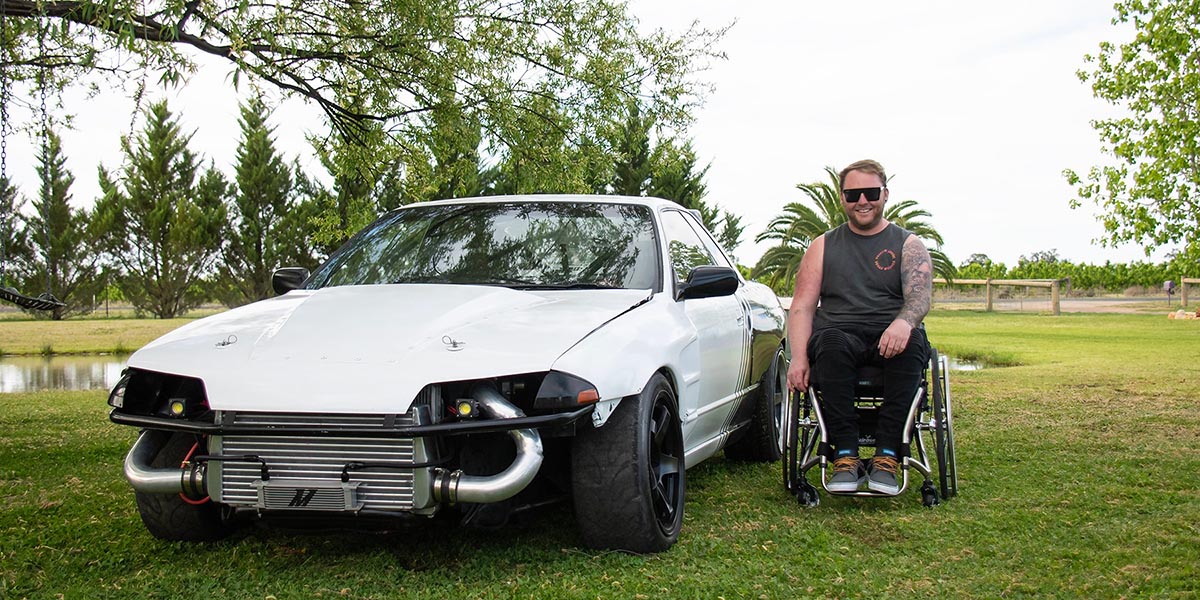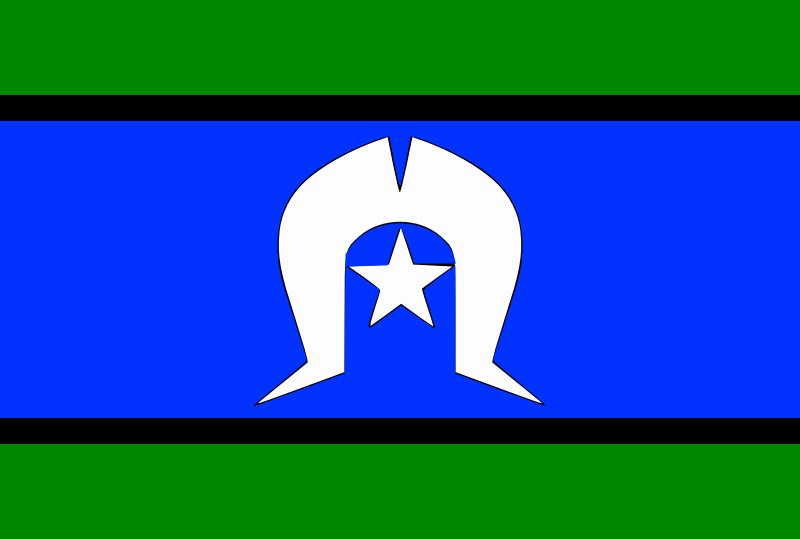by Dan Nathan
Before his accident in 2020, dirt bike racing was Luke’s thing.
Cooped up at the Royal Talbot during rehab and covid lockdowns, Luke started looking up YouTube videos of different adaptive sports.
‘I was just thinking, how can I get an adrenaline rush again?’ says Luke.
Luke came across Rob Parsons, also known as Chairslayer. Living in the US, Rob designs, builds and drives drift cars. For the uninitiated, drifting is a sport that revolves around the controlled loss of traction. Going around a corner at speed, the driver intentionally oversteers. The wheels lose traction, but through skilled handling the driver still maintains control of the car.
‘When I saw the Chairslayer in action, I thought well, I’ve found the next best thing to dirt bikes’, says Luke.
Luke finished his time in rehab, moved back home, and started doing daily physio to build his core strength. When he could transfer into a car, he got his licence and found a drift car – a Nissan Skyline.

Once he had the car, he found a ‘drifter’ closer to home, Graeme, from South Australia. Graeme had been experimenting with burnouts and drifting, and had designed his own hand controls to suit, which he agreed to install in Luke’s Skyline. After the install, Luke got to work practising around the farm.
Drift community
Luke’s 29, living in regional Victoria, and has a T12 incomplete spinal cord injury. He’s part of a small but growing community of adaptive drift car designers, builders and drivers.
This community has been designing and crafting specialised hand controls that allow them to dump clutches, burn rubber and go as hard as anyone (within the safety of sanctioned events and private property, of course).
‘Without Graham’s design, I wouldn’t have figured it out. But once I had the design I could make it my own, a bit better, a bit more efficient, a bit more heavy duty,’ says Luke.


Sliding around the farm, Luke started to get a feel for the hand controls and the car. Once he had the basics, he started hitting the drift meets.
‘There’s no wheelchair class,’ chuckles Luke.
‘So you’re competing against people with functional feet and legs, definitely makes it a bit more difficult, but I love it.’
‘When I’m at a meet, every second person wants to look at the car when I come back in from the track. They wanna know how I do it, how I set it up – they’re all very curious, and supportive,’ says Luke.
And then, late last year, disaster struck. The Skyline’s engine blew up.
‘The rods and pistons came out the sides of the block, oil spilled onto the exhausts and it caught fire,’ says Luke.
‘Luckily the car rolled to where spectators and fire crew were, so the fire was put out quickly. But not before the front end was toasted – every wire melted.’
Rebirth
Not long after the smoke had cleared, Luke started sinking 40+ hours a week into the car, painstakingly reviving and rebuilding, and he hasn’t stopped.
‘You gotta have a hobby’ says Luke. ‘It’s become my one passion.’
The project plunged Luke into depths of skill, knowledge and determination he had not banked on when he started his drifting journey.


Over the last year, Luke’s pulled an engine apart, put it back together, added a turbo, shaped the Skyline’s curves with fibreglass moulds, built a new fuel system, rewired the electrics, and overhauled the interior and dash, to list just a few of the jobs.
‘I could have paid someone good money to rebuild it, but this way I’m learning myself, and when it does drive, it’s more of an achievement’, says Luke.
Luke’s nearing the end of the project, and he reckons he’s done about 70% of the work on his own.
‘If it’s not too heavy, there’s almost always a way around it. You might think it’s impossible, but if you try, and think about it long enough, then you’ll come up with a way to get it done.
‘I’ve spent a lot of time sitting around scratching my head, but I usually get there.’
Along with plenty of crawling underneath the car, Luke learned how to lean into it. He was already using a modified standing frame most days for his physio work. He’d removed the chest rest, so the frame came up to his waist, allowing him to bend right over and stretch his hamstrings, or, as he’d later discover, lean into an engine bay and get his hands dirty.
‘It’s definitely helped my core strength – it’s doing physio without realising you’re doing physio’, reflects Luke.

Takes a village
Of course, no amount of creativity and grit was going to allow Luke to tackle all parts of the rebuild. Some parts were just too heavy, or too specialised. Getting better at asking for help in those moments has been another learning curve for Luke.
‘I was never one to ask for help – now I’ve got to – I still struggle with that a lot.’
Luke’s got a couple of mechanic friends, a couple of spray painters, and quite a few unqualified mates who know what they’re doing.
These friends have been helping Luke at different stages of the project, and they’ve been having some fun doing it.
‘Having mates around working on the car, it becomes a memory as well. A couple of drinks afterwards when you’re finished, it’s a nice time.’
‘Without friends I probably wouldn’t have got to where I am,’ says Luke.
Luke’s hoping to have the car ready in the next month or so, and re-enter the drift circuit with a unique and fighting-fit Skyline.
‘As long as it works for five minutes, it’s all worth it.’

- October 3, 2023




